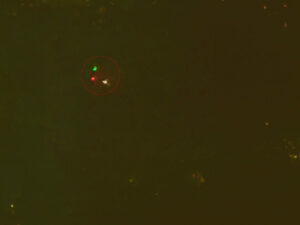In 1968, George A. Romero’s Night of the Living Dead incidentally became one of the landmarks in horror movie history. Essentially, it could have been seen as just another low-budget horror flick. This film, however, found itself later not only as the beginning of the zombie genre, but also as emblematic of the specific social atmosphere. A year of assassinations, protest, and a nation hanging on the brink of disintegration. Romero’s picture, a prophecy made unknowingly, reflected the raw psyche of a population besieged.
What gives the film its staying power is not simply the monsters or the gore, but the way it presses down into the deeper fears: hostility, distrust, the slow tearing apart of human ties. Here René Girard’s thought helps to bring it into sharper view. His idea of mimesis, where desire and rivalry spiral until the group demands a scapegoat, can be read straight onto Romero’s story. Night of the Living Dead plays out as more than terror for its own sake. It becomes a stage where a community, unable to bear its own unraveling, turns against itself.
Spoilers ahead…
Girard’s concept starts with imitation: human beings imitate the desires of others, which eventually lead to rivalry. Theoretically, this is not something to be seen in Romero’s farmhouse – this is the theory turned into a system of events where the drama is very much the same as what people think in the real world. Ben wants the living room to be under his control; Harry Cooper, on the other hand, is adamant about using the basement. Their bickering, however, goes beyond just exchanging strategies. It is also about identification, control, and pride. Both men juxtapose the stubbornness of the other and thus keep the co-operation from becoming possible. While the dead are putting pressure on the windows, the living discover that their true fight is against each other. The house becomes a microcosm of a society where trust has been hollowed out by polarization, where the compulsion to win has conquered the struggle for survival.
The zombies are going dead slowly, but are they only bringers of death? No, they are those whom Girard refers to as “the sacrificial crisis“, the time when the communities that can no longer find their way in the old ways of life. In the legends, this happens when the violence that kills the culture escalates until a scapegoat is found for it to stop. The undead at Romero’s door are not just a trope of horror – they are the symbols of chaos, the “too much” that crushes one. They reveal what the characters can’t reconcile among themselves: fear, hatred, and collapse of consensus.
Probably the last Girardian moments of the film are the ending. Ben, the survivor of the night, is shot at by a group of armed people when he leaves into the daylight. Firstly, his death is quick, remained without much attention, and, wrongly, considered a necessity. In Girard’s concept, this is the scapegoat mechanism: the group violence is targeted on one figure only, who’s then considered to bring back safety. Ironically enough, although Romero confirmed that his intention was different, the fact that Ben is Black only makes more sense of it. The scapegoat is never selected in a rational way; instead, it is chosen because it is there, defenseless, “other” enough to shoulder the fear load.
The tragedy is not only Ben’s death but also the feeling that nothing has been understood. The violence cycle has been completed, and it is not solved. As Girard put it, myths hide the innocence of the victim; Romero in his harshness, still makes the case impossible. We witness the heroic Ben being dragged and set on fire, transformed into the refuse by which order is restored through sacrificial violence.
One should not limit Night of the Living Dead merely as a mirror of 1968. The cleverness of this movie is in its foreshadowing of the recurring human behavior pattern when societies become polarized. Reason is overpowered by rivalry which results in dissolution of solidarity and when fear becomes too strong, the need for a scapegoat arises. Romero was not a philosopher, but his work remarkably triangulates with anthropology and psychology. The undead in his cinema are not really the monsters. They are the background noise, the pressure that exposes the characters’ unraveling of human nature under
Romero’s lost reel, The Amusement Park, which we will discuss on October 30, deals with these issues in a different tone: age, neglect, and alienation. In Romero, the horror is never really the zombie. It is us.

